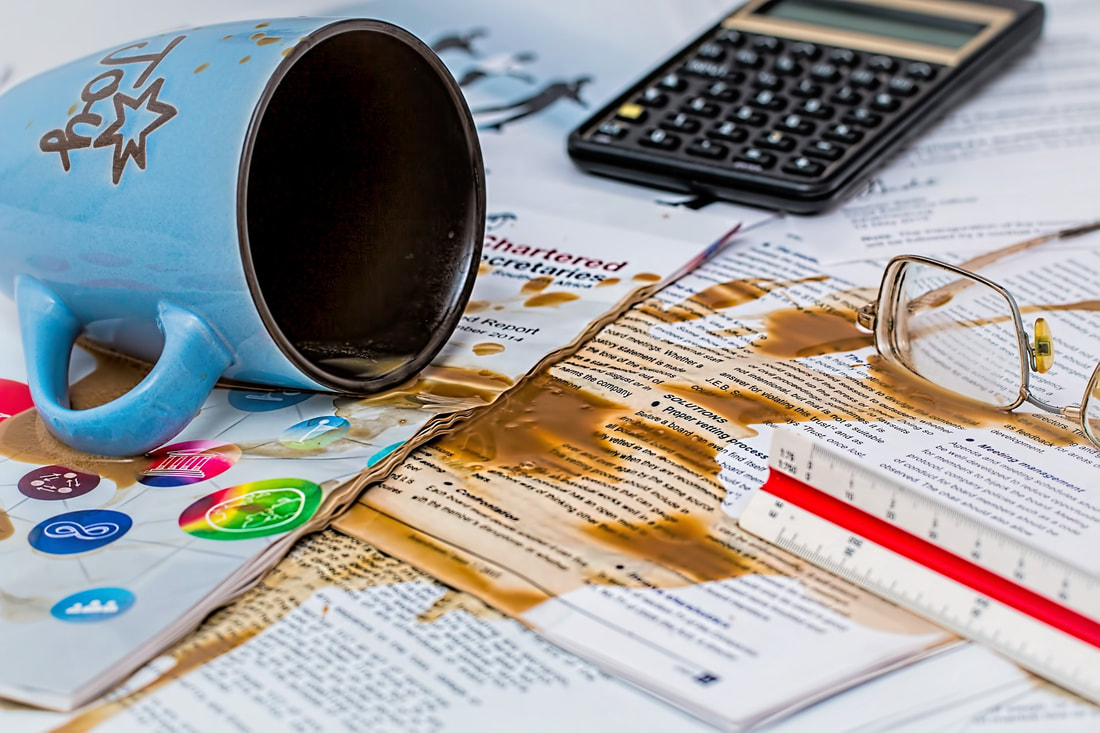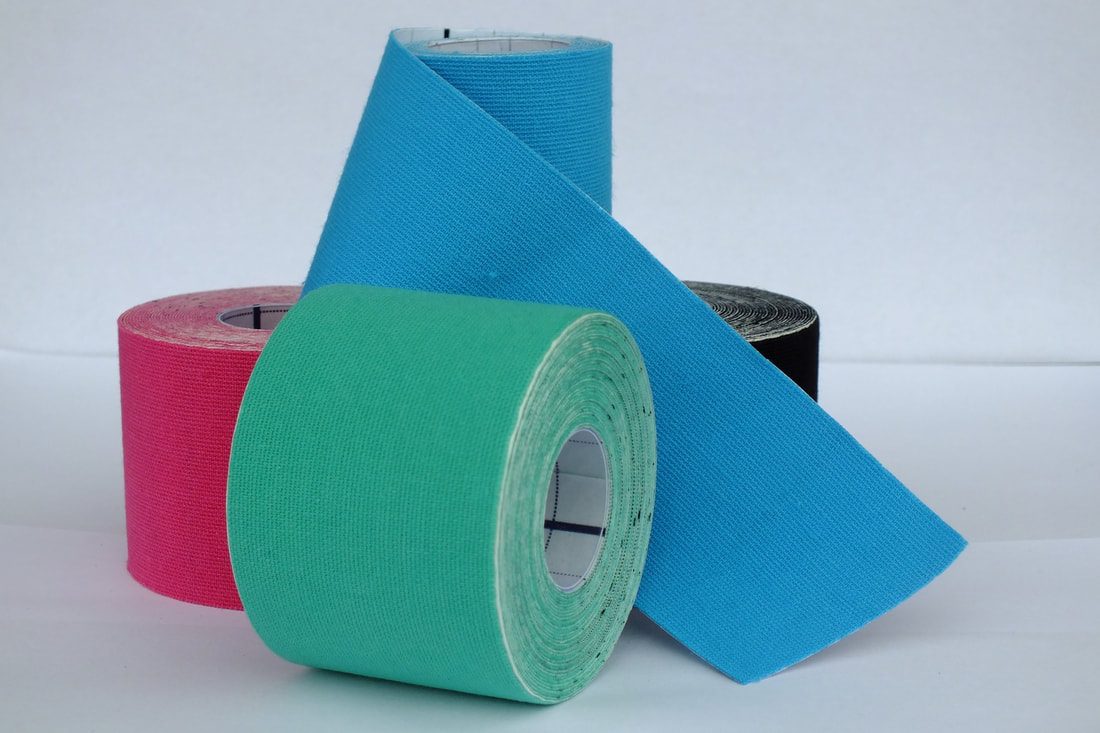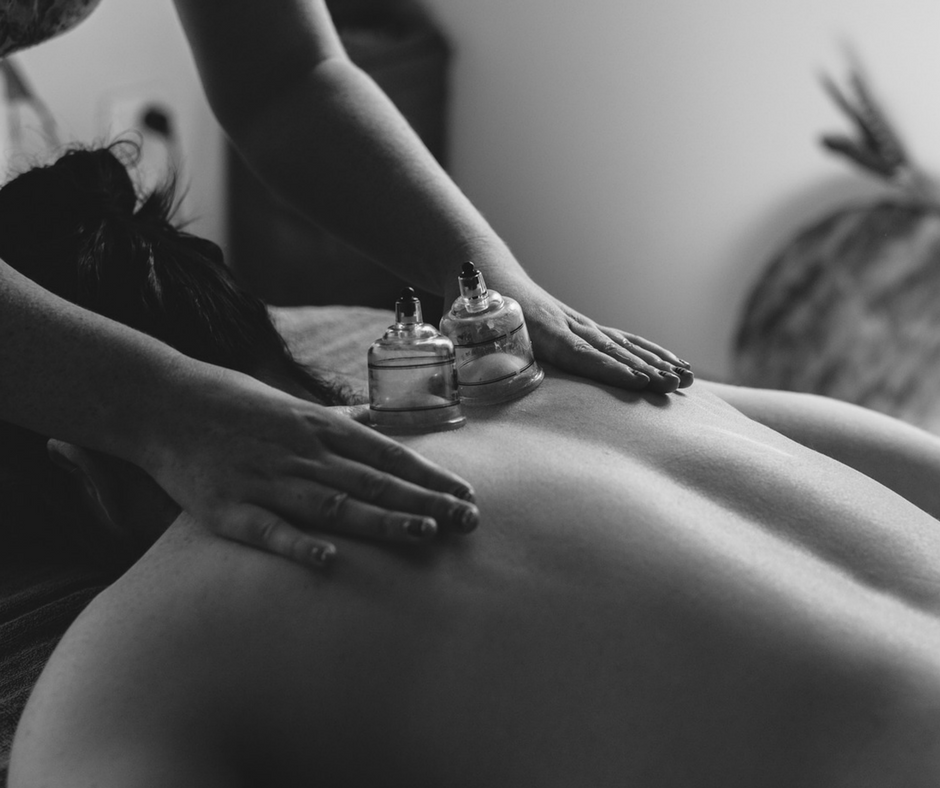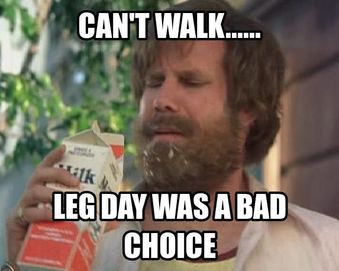|
You’ve been told you have Tennis Elbow, but you don’t even play tennis? The pain can catch you off guard, and make normally simple tasks feel really difficult - opening jars, turning door handles, shaking someones hand, maintaining your grip on something. This type of pain can feel like a deep muscle aching, a stretch in the muscle, sharpness when you move, or a combination of these feelings. Our Myotherapists and Remedial Massage Therapists can help by creating a treatment plan for you that relieves the pain and gives you back your strength and ability to turn, twist and grip again.
Tennis Elbow is a painful condition of irritation and inflammation of the tendons around the outer side of your elbow. Its normal to feel the dull, constant ache throughout the day, and have the pain turn into sudden, sharp or shooting pain when you move your elbow or wrist, or try to grip something or twist a lid or door handle. It can happen if you spend a lot of time doing repetitive wrist movements like typing, using tools, carrying something heavy for a long period of time. We see it with people who play musical instruments too, or video gamers who get so into the game they forget to take a break for hours on end. Our typical treatments for this kind of pain will look at assessing your movement and strength first so we can plan out some short and long term goals. Our short term goals are usually the ones you want the most - to get rid of this awful pain!! But its also important to plan for the long term goals of recovering the strength in the area so that this feeling doesn't come back. A series of hands on treatments can help to reduce the pain and sensitivity in the area, and we'll give you a few movements that help that you can focus on between treatments. This is a pain that tends to respond well to doing some stretch and strengthening movements each day, starting with small easy movements, working up to more challenging or weight resisted ones. The hands on part of your treatment may include some remedial massage, cupping, active release techniques, dry needling, and trigger point therapy. Afterwards we can support your elbow with kinesiotaping to reduce pressure over the joint and tendons. Do you need help with elbow pain? Our therapists are ready to help assess your pain and work with you to create a treatment plan to reduce the irritation and restore your movement and strength. Book your first consultation with us now! Most people have heard of the Rotator Cuff being a big culprit of shoulder pain, but do you know what it is and how to get help? Our Myotherapists and Remedial Massage Therapists help a lot of people with Rotator Cuff pain - its one of our most commonly treated pains! The Rotator Cuff is a group of 4 muscles that all work together, and they have different actions. So when you come in with a Rotator Cuff injury, the first thing we’ll work out for you is which muscle is causing you to feel the pain.
The job of the Rotator Cuff group is to move and stabilise your shoulder, and it does that by making what I like to light heartedly call the Shoulderblade Sandwich. Imagine your shoulderblade bone (scapula) as the filling of the sandwich, and the Rotator Cuff muscles are the bread on either side. The muscles on the outer side work to lift your arm and rotate it outwards away from your body, and the inner muscles rotate your arm inwards. The most common issues we see with Rotator Cuff complaints is tight muscles referring pain, or muscle tears. Rotator Cuff referral pains can be felt locally around the shoulder, as well as further down your arm, elbow, wrist and hand. If you've got a Rotator Cuff tear or a partial Rotator Cuff tear, you'll likely notice pain and difficulty on raising or rotating your arm. Muscle tears can be identified on an ultrasound. If you’ve already had the ultrasound and been given the report that you have a tear, the next step for you is to rehabilitate that muscle, and we can help! Pain from shoulder and Rotator Cuff injuries usually respond well to hands on treatments like massage, cupping, or dry needling. We also like to help stabilise your shoulder using kinesiotaping. So how do you get help if you think you might have a Rotator Cuff problem? Firstly, book a time to come see us so we can help you find which of those 4 muscles is acting up. We’ll do some muscle testing and make a plan for reducing your pain and getting you strong again. If we think you may need an ultrasound to check for possible muscle tears, we can refer you to Dr Waj Dib here at Together Medical Family Practice in Knoxfield. Dr Dib is a fully bulk billed GP who can send you for scans if you need them. Everyone knows someone who is a bit of a klutz. But often, there is a reason behind someone being naturally clumsy. It all comes down to what we call proprioception. What is proprioception?
To put it simply, proprioception is a fancy way of describing where your brain perceives your body to be in space. If you have good proprioception, your brain knows that your arms and legs are where they are. But if you have issues with proprioception, your brain might think that you’re a little more to the left or right of where you actually are. This is where it’s common for people to do things like walk into doorframes, stub their toe or miss a step. Some people can be born with a reduced sense of proprioception, particularly if they have neurological conditions such as autism. Others may have proprioceptive issues because of hypermobile joints. Sometimes, proprioception of a particular body part can be reduced through injury, such as a dislocation. What are signs of proprioception issues? There are some common signs of proprioception issues, including:
It can also come with other signs, depending on the cause. Proprioceptive issues will come with sensory signs in people with autism. Hypermobile people will often experience more injuries such as rolled ankles because they have more flexible joints than most people. Have you ever noticed that if you have an injury, you will be more likely to bump that injured limb or area? Thats because that area is where the misinformation is coming from - for example, I cut my finger a few weeks back, and managed to bump it on something on at least 3 different occasions that day! My general awareness of that finger was raised, but my ability to hone in on the location-specific proprioception was decreased due to injury. How can I fix my proprioception? The good news is, you can work on your proprioception and reduce the clumsiness. Proprioception is influenced by information from your nervous system and your balance. Here are some ways to retrain your brain and increase body awareness. Move your body A lot of people will avoid exercise because they think they are clumsy. But the more that you move your body, the more chances your brain gets to correct itself. So don’t avoid exercise – just stick to gentler options while you retrain your brain. Retrain your balance There are specific exercises that can challenge proprioception and retrain the brain. Stability and balance exercises are the most effective. These start with very simple and supported movements, then increase in difficulty as your proprioception adapts. For example, you might stand on one leg with your eyes open. Once you can do that easily, movements of your raised leg can be included which will challenge your balance. If that becomes easy, you can try it with your eyes closed, or add a wobble cushion or balance board. Exercises will need to be tailored to your specific proprioceptive needs. As you can see from the example above, there are many stages of these exercises that progress to harder and more challenging movements as your proprioception enhances. Neurons that Fire Together, Wire Together Have you heard this phrase before? The brain loves short cuts, so movements, actions, thoughts and sensations that are often felt together can become neurally linked. We can use this to our advantage by using exercises and movements in a way that can "rewire" the proprioception of a joint so it relearns its movement or activation patterns. Taping Using tape can help to retrain your proprioception in conjunction with stability exercises. It helps to indicate where the body part is because the tape is slightly stretched on your skin for a number of days - your brain gets a consistent signal from the sensation receptors on the skin saying "Hey! Here I am!". Taping can also help with holding the joint or body part where it should be, preventing issues such as hunching or rolling of the shoulders. It’s best to get taping done by a qualified practitioner who can tape you correctly. This is why I offer taping sessions for my clients who need re-taping between appointments. Do you want to work on retraining your brain and increasing your proprioception? We can put together a personalised management plan to help. Try your first treatment for $97 (normally $115!) Book in an appointment today to get started. Us Aussies love our sports! Keeping active is an essential part of living a healthy, happy life. But whether you love your extreme sports or just enjoy a spot of golf on the weekend, you have a risk of getting injured. What injuries can occur during sports?
Pretty much every injury you can imagine can happen, depending on the sport you’re involved in. Every single bone, joint, muscle, ligament and tendon that can be injured WILL be injured by someone at some point! Some of the more common injuries you might come across include:
Just because your sport is “low impact” doesn’t mean it’s risk-free. Any time we move our bodies, there is a small chance of injury. It’s part of life! But the good news is, injuring yourself doesn’t mean you have to suffer through unnecessary pain. Myotherapy can help with injury recovery Because myotherapy is all about ‘muscle therapy’, it is fantastic for helping you recover from an acute injury. Here are some of the ways that it might be able to help with your sports injury: It can help to drain excess fluid and swelling – when we massage and mobilise an area, it increases the lymphatic drainage from the area. That lymphatic drainage is what can help to pull excess fluid away from an injury, which aids with recovery. It can loosen the muscles around an injured joint – when we are injured, our muscles can tighten up to protect us from further pain. Unfortunately, that’s not so helpful when it comes to recovery. It can keep a weakened joint out of place, and it can strain other muscles that have to compensate. Working the muscles with myotherapy techniques will loosen them, allowing the joint and other muscles to return to a neutral position. Taping can help with swelling, pain and proprioception – it’s great to get some bodywork done. But taping can keep working on the injury days after you’ve left the table. Different taping techniques can be applied to reduce swelling and stabilise the injured area. The most important thing about sports injuries If you have injured something, remember this: the quicker you get it seen to, the quicker it will heal. If left untreated, you may end up with a chronic injury. And believe me, chronic pain is not something you want to get familiar with. Once you’re recovered, you can head on back to your beloved sport! But that’s not where it ends – as we’ll discuss next week, myotherapy can be a great supportive treatment for prevention of injury as well. Been injured while at your favourite sport? It’s best to get it looked after asap. Book in an appointment today, and we’ll get you back into the swing of things quickly. Taping – The Whys And Hows One of the coolest tools for supporting your muscles (or at least I think it’s cool!) is taping. Let’s have a look at what taping is, what it can help, and if it’s right for you. What is taping?
Put simply, taping is when we use a specially designed tape to support your muscles and/or joints. It’s not a treatment to use in place of your healthcare practitioner. But it is a tool that we use to help support your body between treatments. What can taping help with? It has a variety of applications! As a myotherapist, I use taping to: Stabilise joints that are injured or weak Increase proprioception, or location awareness, of the body part Aid in recovery from acute and chronic injury Reduce fluid and swelling in an injured body part Enhance athletic performance and prevent injuries It can be helpful for a variety of people, from athletes to people with chronic pain and those with an acute injury. What types of tapes are there? There are two main types of tape that I use in the clinic: rigid tape and kinesiotape. Rigid tape is just what it sounds like. The goal is to hold the joint in a specific position for a period of time so that it is able to recover. Kinesiotape is a newer kind of tape that moulds to the skin and moves with the body. It is less restrictive, and is helpful for many applications. It’s particularly useful for helping people to be aware of how they are holding their body. When we’re injured, we tend to hold ourselves wherever is least painful – but that’s not always the best location for recovery! This tape helps you to be aware of that, so you can correct it. Kinesiotaping also has a pain reducing effect by applying a constant stimulation to the skin. Its applied with the tight muscle in a stretched position, so that when you return to your normal posture the tape holds the muscle slightly stretched. You might see or feel the tape pucker - that is what its designed to do! Can I do my own taping? I’m not your mum. If you want to DIY your taping, that’s up to you. But there are benefits to getting it done professionally: 1. You get taped with high quality tape 2. If it’s a repeat taping, I will quickly reassess to see whether a different taping technique may be better – for example, I might use rigid tape for the first taping, then switch to kinesiotaping. I might even use both! 3. I make sure that the injured part is positioned correctly 4. You don’t have to tape yourself one-handed, or twist around to tape anywhere on your back half! Taping aftercare There are things you can do to make sure your tape lasts and your skin stays happy: To make sure tape adheres properly, it’s best to avoid exercise or showering for 1-2 hours after taping. Although you can shower with your tape, it’s best to let it dry properly. Otherwise, it might get a bit smelly! Pat it dry rather than rubbing it with the towel so the ends don't come up. If the ends do come up, theres a few things you can do. The Kinesiotape is heat activated, so usually giving it a quick rub to get heat back into the tape will get it sticking again. If the tape is only coming up a little at the ends but won't stick back down, putting a bandaid over the top to hold the end down can give your tape a little extra life. If its coming up a lot, trim the tape (or ask someone to help you trim it) When removing tape, take your time! Some people can have fragile skin that is inflamed or may even tear when removed too quickly. Slowly remove the tape in the direction of your hair growth (otherwise you might get an accidental wax effect!) If your tape is stuck fast, use oil to dissolve the stickiness - even cooking oil from your kitchen can do the trick! Some clients also remove it in a hot shower for the same reason. When you remove your tape, leave the skin to recover for a day or two before re-taping. Otherwise, your skin is at risk of being damaged. Do your joints need some taping support, but you don’t want a full myotherapy appointment every week? Never fear! For current clients, I offer a taping service – you pop in, and I’ll get you taped up for just $25. You can get re-taped between regular appointments, AND you can still claim it on your health insurance! To book in your slot, contact me directly or call 0401212934. Some therapists only offer one option for follow-up consultations. But I found that my clients had different needs. So I decided to offer 4 different options for follow-ups. But how do you know which myotherapy treatment suits your needs? Let's have a look at what they are, and who they suit. Myotherapy Treatment Options
Initial appointment The initial appointment is just what it sounds like! It's your introduction to the world of Simple Wellness Myotherapy, and myself of course. If you've never visited me before, this is the treatment option for you. It's where we learn about each other, and how we can best work together. For more information, have a quick look at what to expect in your appointment. Length: 60 minutes, including approximately 10-15 minutes discussion Best for: Everyone who is new to Simple Wellness Myotherapy! Standard follow-up appointment A standard follow-up may be a standard length, but you'll still be getting outstanding care! Most people will suit a standard follow-up appointment. This myotherapy treatment option gives us a few minutes to discuss how you've been since your last treatment. Then, it's diving straight into some hands-on treatment. Length: 50 minutes, including approximately 5 minutes discussion Best for: Someone who would like ongoing care, and felt like their initial treatment was the right length for them. Short follow-up appointment There's nothing quite like a quickie – appointment that is. Sometimes, you just don't have the time to fit a full follow-up into the schedule. And that's ok – you can still get a quality session in. We'll have a quick chat to see where you're at, and then get down to treatment time. Some people use short follow-up appointments for small, acute injuries. Others only have 30 minutes before they have to go and pick the kids up or head back to work. If that's you, the short length is ideal for your needs. Length: 30 minutes, including approximately 5 minutes discussion Best for: Someone who is short on time, or who has one specific area they want focused on. Long follow-up appointment Ready to really work out those kinks and get your body feeling better? The long follow-up might be just what you need. We'll have a short discussion to decide where to focus. Then you'll be on the table for at least an hour of personalised treatment. Doesn't that sound like heaven? This myotherapy treatment gives you plenty of time on the table, so I can work on multiple muscle groups. It's also a great choice for relieving stress and taking some quality time out for yourself. Length: 80 minutes, including approximately 5-10 minutes discussion Best for: Anyone with multiple areas of concern, or who are wanting a longer treatment time. People with complex medical issues or conditions may also like to book a longer appointment. Taping only follow-up appointment Kinesiotaping is a great pain reliever that lasts long after you’ve finished your appointment. Its also a great way of extending the time between treatments, while providing a bit of extra support for sensitive joints. This treatment is an assessment and taping only session. Length: 10 minutes, approximately Best for: Anyone with joint pain or instability. Athletes and sportspeople who need some extra support before an event. Which myotherapy treatment option is best for you? It really depends on your personal needs. If you're still not sure which appointment will suit you, send me a message and we'll discuss your options further. Ready to book in your next myotherapy treatment? Pop on over to the treatments & bookings page to book yourself in for an appointment. It's been 48 hours, and I am still struggling big time!! But I can happily report that the taping on my right leg seems to have decreased the sensitivity quite a bit. So I'm regarding my experiment as a bit of a success. It hasn't completely eased the pain, but comparing left and right, the taped leg is holding up much better than the untaped side!
I had never understood what people meant when they said they hated Leg Day before... A word to the wise, ease into a new fitness routine, what feels OK at the time might not feel so great the following day - or 4 days!!!  Officially, DOMS is the WORST. It's pretty much the worst reward for pushing your upper physical limits. For me, a 60 minute leg routine is still going strong 2 days later. Sitting, standing, stairs - these are all my least favourite right now. So I'm doing a bit of an experiment on myself using Kinesio Taping to see what impacts, if any, it has on the DOMS in my quads. I've taped the right leg as my experimental group - one big strip all the way across the knee to the hip; one split strip over the left and right sides of my thigh following the most painful areas vertically; and a cross strip over the most painful spot horizontally. The left leg is the control group - lefty gets no taping. I applied the taping about 24 hours ago, and what I've found so far is:
I'm interested to see what impacts the taping might have over the next 24-48 hours. I found a research paper that indicated that taping could reduce the duration of DOMS, so I'll report back in another 24 hours on whether I've experienced any differences between the taped and untaped leg. Another lesson I've learnt is - leg day is 100% a Friday only PT session for me! |
Meet Our Team
We have a team of great practitioners available 7 days a week at our Rowville clinic. Archives
July 2024
Categories
All
|
Got a question about Myotherapy?
Contact Mel by phone, email or Facebook
|
Simple Wellness Myotherapy & Remedial Massage Clinic
Shop 12B 150 Kelletts Rd Rowville VIC 3178 |
Phone us on
03 8204 0970 |








 RSS Feed
RSS Feed